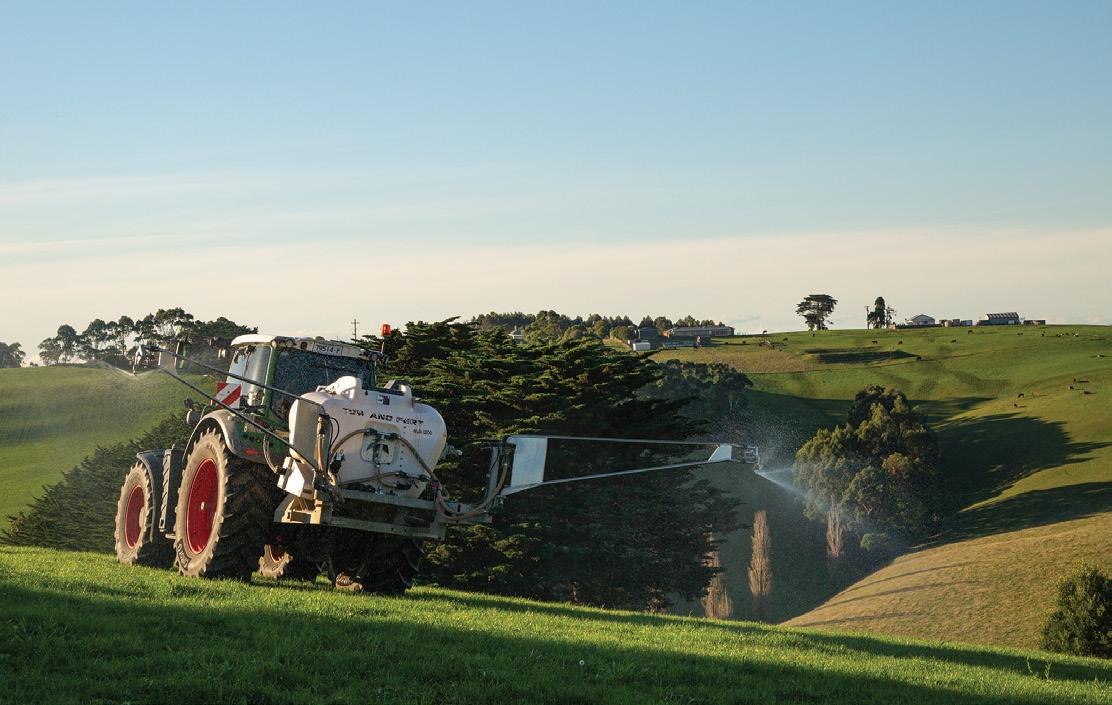
3 minute read
Forage and fert solutions
Machine versatility a key to farm efficiency
New Zealand dairy farmers have led the way with efficiency gains across the farming system for decades. One area that has taken more time is in the world of fertiliser application. For a long time, solid fertiliser application was the only way to apply nutrients to grow more grass.
Today farmers are faced with numerous pressure points to change the way they look at fertiliser application leading to many looking at the foliar and fine particle methods as ways of reducing inputs and saving money.
Increased cost of staple fertilisers such as urea has led many to want to save money on fert, and environmental regulations have meant farmers have had to find a way to reduce inputs whether they like it or not.
Urea is a soluble fertiliser that is easily dissolved in a matter of minutes with the right equipment. Better still, application of urea as a liquid enables farmers to reduce the input of this nutrient immediately by up to 50% yet grow at least the same amount of grass, sometimes increasing drymatter growth.
Not only is nitrogen application as a liquid a huge benefit to the farming system, machines such as the Tow and Fert enable farmers to use Ultra Fine Particle (UFP) Products in the tank at the same time as applying liquid ‘N’. It means farmers can apply multiple products at the same time, apply specific brews for each season and each paddock’s needs, and still reduce their capital fert requirements by an additional 30%.
Tow and Fert have pioneered this method of fertiliser application making the range of Tow and Fert one of the most versatile machines on the farm. Once underway with a Tow and Fert you will likely find that you only use your tractor more often.
Realising the gains that can be made onfarm in the nutrient application space has many positive benefits for farmers across the farm.
More? Visit www.towandfert.co.nz
A chicory of Choice
Choice chicory is an excellent option as a summer crop to supplement milking cows when ryegrass growth rates are low and quality is poor. Choice is New Zealand-bred and proven as a fast-establishing, high-yielding, six-eight-month summer crop.
Planting date is key to get the most out of Choice chicory. Planting can start once soil temperatures reach 12C and rising, when soil is in good condition for planting. Trials in Waikato have shown planting on October 16 resulted in an extra grazing and stronger establishment compared with sowing on November 16. This means starting to graze by mid-December, when ryegrass quality is starting to drop due to seedhead production, which can therefore increase milk production.
Chicory should be sown into a firm, weed-free seedbed, no deeper than 5-10mm. Planting with DAP will dramatically help with speed of establishment. Controlling weeds early while they are small is also a crucial step to ensure good control and best success from the crop.
Choice takes about eight weeks to establish. It will be ready for its first graze at 20cm height once it has at least seven true leaves, with the target being 3000kg drymatter (DM)/ha, with post-grazing residuals at 5cm. Once the first grazing has been achieved, Choice should be on a 21-day rotation throughout the summer and autumn. Many farmers use the strategy of feeding chicory for two or three hours before afternoon milking, a great way to increase intakes in the heat of the afternoon.
To control chicory in the autumn before regrassing, spray the crop with glyphosate at 25cm cover, graze three days later, then immediately direct drill in perennial ryegrass. This will give the best result, ensuring the chicory doesn’t outcompete the new grass.

Choice chicory.










